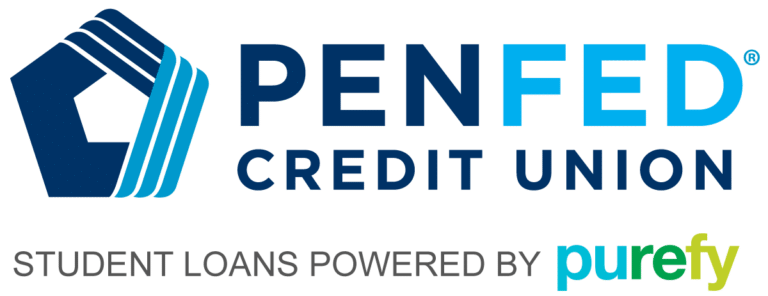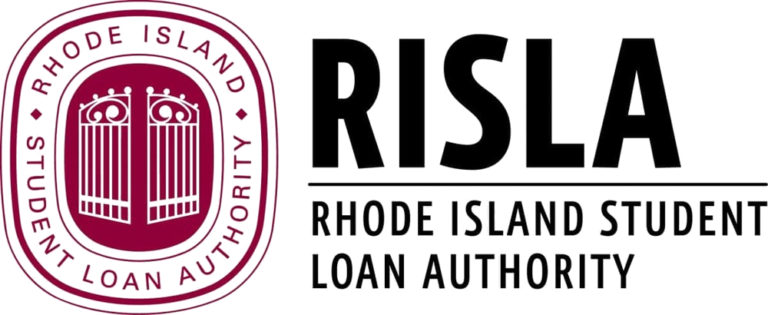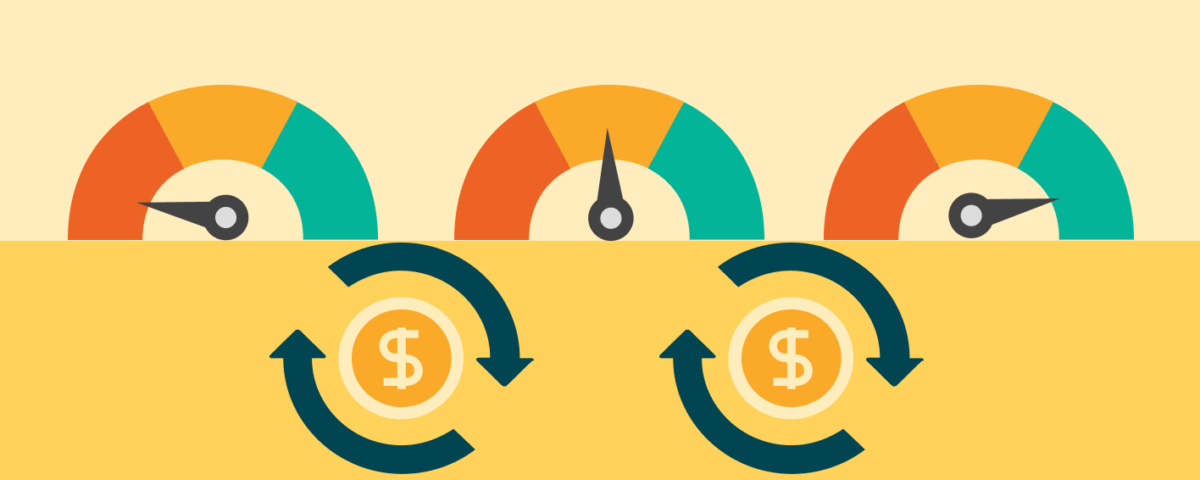Credit Score Needed to Refinance Student Loans and Other Requirements
Our goal is to give you the tools and confidence you need to improve your finances. Although we receive compensation from our partner lenders, whom we will always identify, all opinions are our own. Credible Operations, Inc. NMLS # 1681276, is referred to here as “Credible.”
If you’re applying for a new loan, you’ll often need good credit to get approved. This is also true if you’re looking to refinance your student loans.
However, minimum credit score requirements for refinancing can differ from one lender to the next.
Here’s what you should know about the minimum credit score needed to refinance student loans:
Eligibility requirements to refinance student loans
While eligibility criteria — including minimum credit score requirements — can vary by lender, here are a few common conditions for student loan refinancing that you’ll likely come across:
| Eligibility criteria | Min. requirements |
|---|---|
| Credit score |
|
| Verifiable income |
|
| Debt-to-income ratio (amount you owe in monthly debt payments compared to your income) |
|
Learn More: 11 Strategies for Paying Off Your Student Loans Faster
Credit score needed to refinance student loans
The exact credit score you’ll need to refinance your student loans will depend on the lender. Most lenders require borrowers to have good to excellent credit. A good credit score is usually considered to be 700 or higher. Your credit score will help determine your interest rate, too — in general, the higher your credit score, the better your interest rate.
There are also several lenders that offer refinancing for bad credit, but these loans typically come with higher interest rates compared to good credit loans.
If you don’t want to lose access to these federal benefits, another option to consider is consolidating your federal loans into a Direct Consolidation Loan. This won’t change your interest rate, but it will allow you to extend your repayment up to 30 years. Just keep in mind that by extending your term, you’ll pay more in interest over time.
If you decide to refinance your student loans, it’s important to compare as many lenders as possible. Consider not only their interest rates, but also eligibility criteria (such as minimum credit score requirements), repayment terms, and any fees charged by the lender.
Here are Credible’s refinancing partner lenders and their minimum credit score requirements:
| Lender | Fixed rates from (APR) | Variable rates from (APR) | Loan terms (years) | Loan amounts | Offer Cosigner Release? |
|---|---|---|---|---|---|
 |
4.54%+ | N/A | 10, 15, 20 | $7,500 up to $200,000 (larger balances require special approval) |
Yes, after 36 months |
|
|||||
 |
2.15%+ | 1.87%+ | 5, 7, 10, 15, 20 | $10,000 up to $250,000 (depending on degree) |
No |
|
|||||
 |
2.44%+1 | 2.24%+1 | 5, 7, 10, 15, 20 | $10,000 to $500,000 (depending on degree and loan type) |
Yes, after 36 months |
|
|||||
 |
2.99%+2 | 2.94%+2 | 5, 7, 10, 12, 15, 20 | $5,000 to $300,000 (depending on degree type) |
Yes, after 24 months |
|
|||||
 |
2.16%+ | 2.11%+ | 5, 7, 10, 15, 20 | $5,000 to $500,000 | Yes, after 36 months |
|
|||||
 |
1.8%+5 | 1.8%+5 | 5, 10, 15, 20 | $1,000 to $250,000 | Yes, after 36 months |
|
|||||
 |
2.47%+3 | 2.39%+3 | 5, 7, 10, 12, 15, 20 | Minimum of $15,000 | No |
|
|||||
 |
3.47%+4 | 2.44%+4 | 5, 10, 15, 20 | $5,000 to $250,000 | Yes, after 48 months of on-time payments |
|
|||||
 |
2.24%+ 7 |
N/A | 5, 7, 10, 12, 15, 20 | Up to $300,000 | Yes, after 24 months |
|
|||||
 |
3.05%+ | 3.05%+ | 7, 10, 15 | $10,000 up to the total amount of qualified education debt | No |
|
|||||
 |
2.89%+ | N/A | 5, 8, 12, 15 | $7,500 to $300,000 | Yes, after 12 months |
|
|||||
 |
2.69%+ | N/A | 5, 10, 15 | $7,500 up to $250,000 (depending on highest degree earned) |
No |
|
|||||
 |
2.49%+ 6 |
1.99%+ 6 |
5, 7, 10, 15, 20 | $5,000 up to the full balance of your qualified education loans | No |
|
|||||
|
All APRs reflect autopay and loyalty discounts where available | 1Citizens Disclosures | 2College Ave Disclosures | 5EDvestinU Disclosures | 3 ELFI Disclosures | 4INvestEd Disclosures | 7ISL Education Lending Disclosures | 6SoFi Disclosures |
|||||
| Compare personalized rates from multiple lenders without affecting your credit score. 100% free!Compare Now |
|||||
Check Out: 7 Ways to Lower Your Student Loan Interest Rate Now
How to qualify for student loan refinancing
If you’re ready to refinance your student loans, follow these four steps:
- Check your credit score. When you apply for refinancing, the lender will review your credit to determine your creditworthiness — so it’s a good idea to take a look at your credit first to see where you stand. You can use a site like AnnualCreditReport.com to review your credit reports for free. If you find any errors, dispute them with the appropriate credit bureau to potentially boost your credit score.
- Gather income documents. Lenders typically ask borrowers to submit recent pay stubs or tax documents to verify income as well as calculate DTI. Some lenders have a specific minimum income requirement you’ll need to meet while others don’t — but in either case, they’ll want to see that you can afford to repay the loan.
- Research and compare lenders. Be sure to shop around and compare as many student loan refinance companies as possible to find the right loan for you. Many lenders provide a prequalification option without a hard credit check so you can see your personalized loan offers before completing a full application. For example, with Credible, you can compare your prequalified rates from multiple lenders after filling out a single form — without affecting your credit.
- Pick your loan option and complete the application. After you’ve done your lender research, pick the loan option that best suits your needs. You’ll then need to fill out a full application and submit any required documentation. If you’re approved, continue making payments on your old loans while the refinance is processed — this could take one to two billing cycles to complete.
If you decide to refinance your student loans, remember to consider as many lenders as you can to find the right loan for you. This is easy with Credible — you can compare your prequalified rates from multiple lenders in just two minutes.
See Your Refinancing Options
Credible is 100% free!
Learn More: How to Know if Your Student Loan Interest Rates Are Too High
What you can do if you don’t meet qualifying requirements
If you don’t meet the qualifying requirements for refinancing, here are a few options to consider:
Add a cosigner — and find a lender that offers cosigner release
Having a creditworthy cosigner could help you get approved for refinancing if you have poor or fair credit. A cosigner can be anyone with good credit — such as a parent, other relative, or trusted friend — who is willing to share responsibility for the loan.
Even if you don’t need a cosigner to qualify for refinancing, having one could get you a lower interest rate than you’d get on your own.
If your potential cosigner feels unsure about sharing responsibility for the loan, finding a lender that allows for cosigner release might help put their mind at ease. Also be sure to sit down and discuss ground rules for your situation before you apply (such as what to do if you can’t make a payment) to avoid straining your relationship with your cosigner.
If you’re thinking about refinancing with a cosigner, here are some pros and cons to keep in mind:
| Pros | Cons |
|---|---|
|
|
Check Out: How Often Can You Refinance Student Loans?
Improve your credit score
If you have poor credit and can wait to refinance, it could be a good idea to spend some time improving your credit score first. This way, you’ll likely have an easier time getting approved — as well as have a better chance of qualifying for a good interest rate.
There are several ways to potentially build your credit, such as:
- Making on-time payments: Your payment history is one of the biggest factors that make up your credit score. Paying all of your bills on time could help you build a positive payment history and improve your credit over time.
- Paying down credit card balances: Another major component of your credit score is your credit utilization ratio — this is the amount you owe on revolving credit lines (such as credit cards and lines of credit) compared to your total credit limits. Paying down your balances can lower your credit utilization, which might boost your score.
- Becoming an authorized user: One of the easiest ways to build your credit is to become an authorized user on the credit card account of someone you trust. By doing this, you can benefit from the card owner’s good credit habits without even needing to use the card.
Learn More: Cost to Refinance Student Loans: Fees and Discounts Explained
Alternatives to refinancing a student loan
Refinancing is a good idea in some cases, but it isn’t right for everyone. Additionally, it can be hard to qualify for refinancing if you don’t have good credit or stable income (or someone willing to cosign your loan).
While the options for private student loans outside of refinancing are limited, here are a few alternatives to consider if you have federal student loans:
Sign up for an income-driven repayment plan
On an income-driven repayment (IDR) plan, your payments will be based on your income — typically 10% to 20% of your discretionary income. Additionally, any remaining balance will be forgiven after 20 to 25 years, depending on the plan.
There are four main IDR plans to choose from:
- Pay As You Earn (PAYE)
- Revised Pay As You Earn (REPAYE)
- Income-Based Repayment (IBR)
- Income-Contingent Repayment (ICR)
Check Out: PAYE vs. REPAYE: Which Repayment Plan Is Right for You?
Pursue student loan forgiveness
There are several student loan forgiveness programs available to federal student loan borrowers. Most of these programs require you to work in a certain field and make qualifying payments for a specific amount of time.
For example, if you work for a nonprofit or government organization and make qualifying payments for 10 years, you might be eligible for Public Service Loan Forgiveness.
Learn More: Private Student Loan Consolidation
Consolidate your loans
If you have multiple federal loans, you can consolidate them into a Direct Consolidation Loan. With a Direct Consolidation Loan, your interest rate will be the average of your old loans, but you might be able to extend your repayment term up to 30 years — this could greatly reduce your monthly payments but also means you’ll pay more in interest over time.
If you decide to refinance your loans, remember to consider as many lenders as you can to find the right loan for your needs. This is easy with Credible: You can compare your prequalified rates from multiple lenders in two minutes — without affecting your credit.




